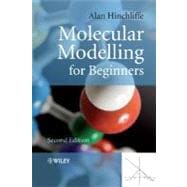
What is included with this book?
| Preface to the Second Edition | |
| Preface to the First Edition | |
| Electric charges and their properties | |
| Point Charges | |
| Coulomb's Law | |
| Pair wise additivity | |
| The Electric Field | |
| Work | |
| Charge distributions | |
| The mutual potential energy U | |
| Relationship between force and mutual potential energy | |
| Electric Multipoles | |
| The electrostatic potential | |
| Polarization and Polarizability | |
| Dipole polarizability | |
| Many-body forces | |
| Problem Set | |
| The Forces between Molecules | |
| The Pair Potential | |
| The multipole expansion | |
| The Charge-Dipole interaction | |
| The dipole-dipole interaction | |
| Taking account of the temperature | |
| The Induction energy | |
| Dispersion energy | |
| Repulsive contributions | |
| Combination rules | |
| Comparison with Experiment | |
| Improved pair potentials | |
| A Numerical potential | |
| Site-site potentials | |
| Problem Set | |
| Balls on Springs | |
| Vibrational Motion | |
| The Force Law | |
| A simple diatomic | |
| Three Problems | |
| The Morse Potential | |
| More Advanced Potentials | |
| Molecular Mechanics | |
| More about balls on springs | |
| Larger systems of balls on springs | |
| Force fields | |
| Molecular Mechanics (MM) | |
| Modelling the solvent | |
| Time-and-Money-saving tricks | |
| Modern Force Fields | |
| Some commercial force fields | |
| The Molecular Potential Energy Surface | |
| Multiple Minima | |
| Saddle Points | |
| Characterization | |
| Finding Minima | |
| Multivariate grid search | |
| Derivative methods | |
| First Order Methods | |
| Second Order methods | |
| Choice of Method | |
| The Z matrix | |
| The end of the Z matrix | |
| Redundant Internal Coordinates | |
| Molecular Mechanics Examples | |
| Geometry Optimization | |
| Conformation Searches | |
| Aminoacids | |
| QSAR | |
| Problem Set | |
| Sharing out the energy | |
| Games of Chance | |
| Enumeration | |
| The Boltzmann Probability | |
| Safety in Numbers | |
| The Partition Function | |
| A two-level quantum system | |
| Lindemann's Theory of Melting | |
| Problem Set | |
| Introduction to Statistical Thermodynamics | |
| The Ensemble | |
| The Internal Energy Uth | |
| The Helmholtz energy A | |
| The entropy S | |
| Equation of state and pressure | |
| Phase space | |
| The Configurational Integral | |
| The Virial of Clausius | |
| Monte Carlo Simulations | |
| Introduction | |
| An Early Paper | |
| The First "Chemical" Monte Carlo Simulation | |
| Importance Sampling | |
| The Periodic Box | |
| Cutoffs | |
| MC Simulation of Rigid Molecules | |
| Flexible Molecules | |
| Molecular Dynamics | |
| The Radial Distribution function | |
| Pair correlation functions | |
| Molecular Dynamics Methodology | |
| Algorithms for time dependence | |
| Molten Salts | |
| Liquid Water | |
| Different Types of Molecular Dynamics | |
| Uses in Conformational Studies | |
| Introduction to quantum modeling | |
| The Schr_dinger equation | |
| The time-independent Schr_dinger equation | |
| Particles in potential wells | |
| The Correspondence Principle | |
| The two-dimensional infinite well | |
| The three-dimensional infinite well | |
| Two non-interacting particles | |
| The Fi | |
| Table of Contents provided by Publisher. All Rights Reserved. |
The New copy of this book will include any supplemental materials advertised. Please check the title of the book to determine if it should include any access cards, study guides, lab manuals, CDs, etc.
The Used, Rental and eBook copies of this book are not guaranteed to include any supplemental materials. Typically, only the book itself is included. This is true even if the title states it includes any access cards, study guides, lab manuals, CDs, etc.